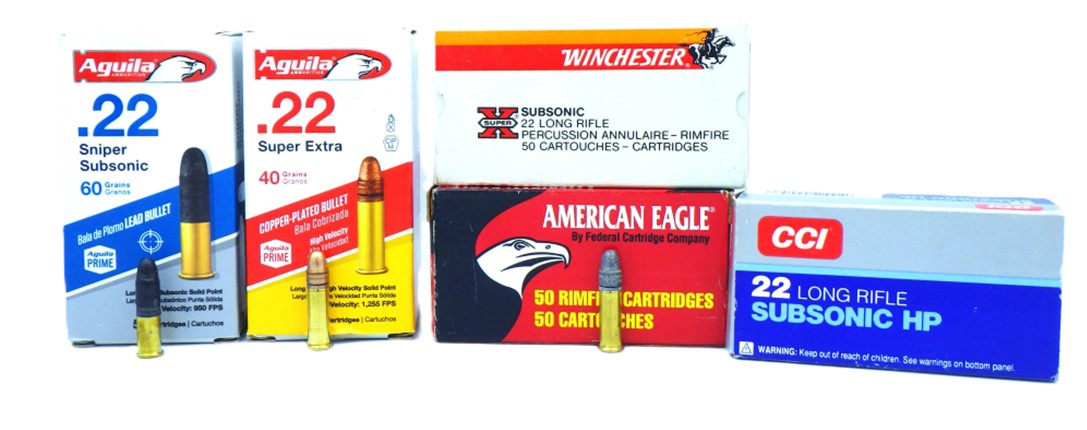Mark Underwood traces the evolution of the .22 LR calibre from its early days of black powder to the introduction of smokeless powders
In the mid-1800s there were a few .22 rimfire calibres in limited production, including the .22 BB cap, the .22 short and the .22 long, but none of them stood out in terms of accuracy or performance. In 1887 the Stevens Arms Company combined the case from the .22 long with a 40gr round nose bullet, loaded to a higher velocity, and found that it shot much flatter and hit harder than the other .22 rimfires of the time. The new .22 long rifle also proved to be much more accurate than its predecessors, which soon became obsolete as the new calibre became increasingly popular.
The .22 LR uses a heeled bullet, which means that the bullet is exactly the same diameter as the case and has a narrowed ‘heel’ at the base that sits inside the case. Instead of having a centrally sited primer, the .22 LR is a rimfire cartridge, which means that it has a hollow circumferential rim, protruding from the base of the case, which contains the primer compound.
When the gun is fired, the firing pin strikes the rim and crushes it against the edge of the barrel breach, igniting the primer compound and thus the powder in the case.
Early versions of the .22 LR used a 5gr charge of fine black powder. When the move was made to smokeless powders the calibre became even more accurate, increasing its popularity and applications. The calibre very quickly caught on, becoming popular for use in pistols as well as rifles, and soon became the most widely used sporting and target shooting cartridge in the world.
The minimal recoil and relatively low noise of the .22 LR make it ideal for novice shooters and children, avoiding the flinch and anxiety that larger calibres with much greater recoil and noise often inflict. It is probably the first calibre that most shooters experience.
Standard .22 LR ammunition is commonly loaded with a 40gr bullet and has a muzzle velocity of approximately 1085fps. With the advent of smokeless powders a .22 LR ‘high velocity’ round was developed that carried a 40gr copper-plated bullet and achieved a typical muzzle velocity of around 1255fps. This ammunition proved to be far more effective on small game and so further increased the popularity of the calibre.
Modern versions of the round are now offered with lighter bullets (in the 30-38gr range), with copper-plated, lead-core, hollow-point versions travelling even faster and giving enhanced expansion, which makes them far more effective on game and vermin.
Despite its diminutive size, the .22 LR is still a highly effective round and it will kill, so it should be treated with the same respect as bigger calibres. Available in a large number of variations of bullet weight and type, and with a vast number of rifles and pistols made to shoot it, the .22 LR remains one of the most popular calibres in use today and the number of rounds fired each week around the world must be in the millions.

KEY FEATURES
Year of introduction: 1887
Parent cartridge: .22 BB cap & .22 short
First rifles: Various
Case type: Rimmed straight-walled
Bullet diameter: .223-.2255
Typical bullet weights: 30-40gr